The Audi TT turns 25 (Updated)
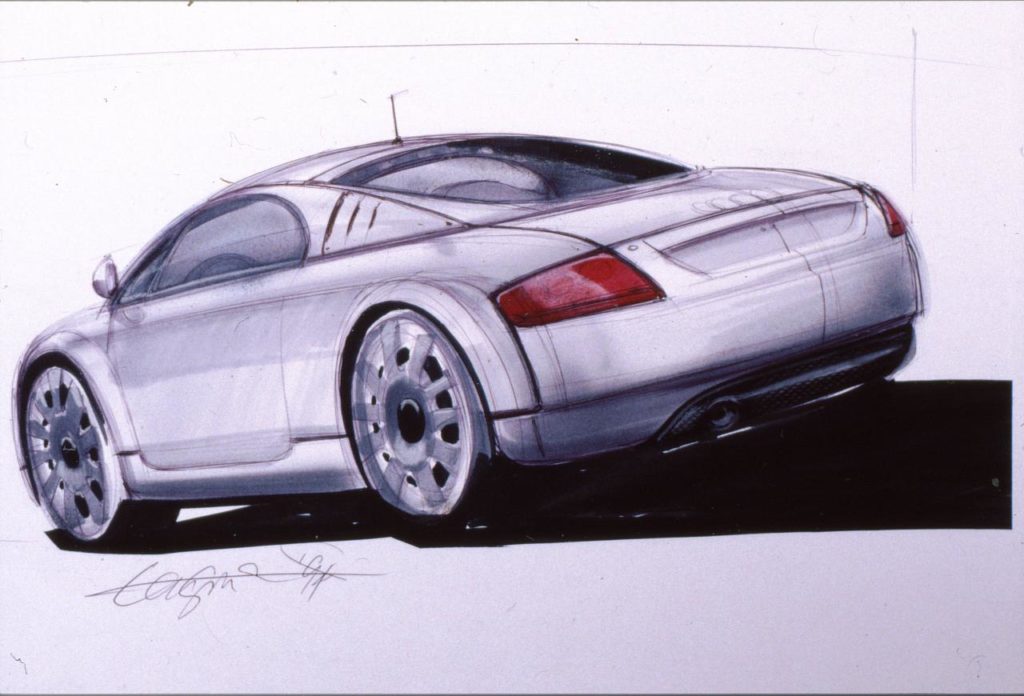
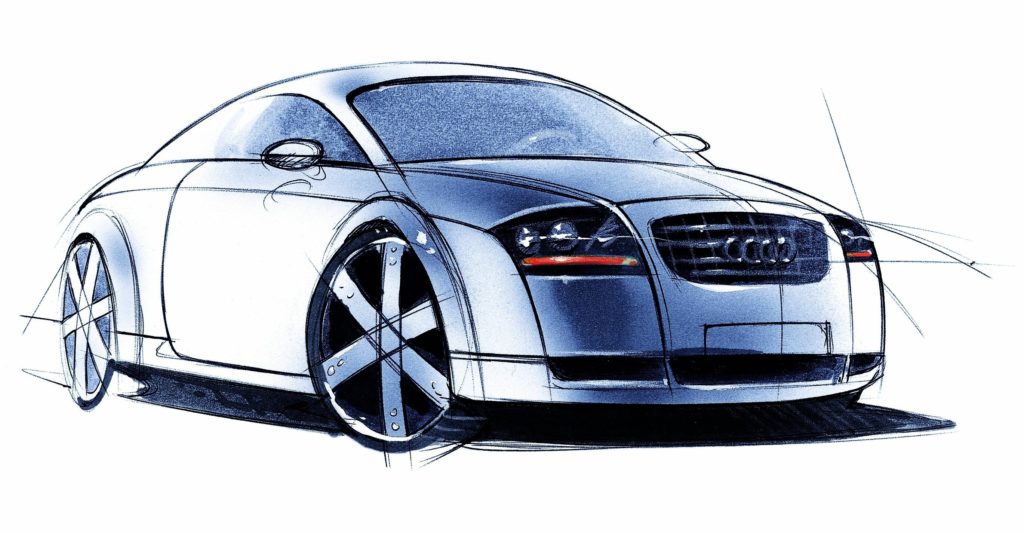
Twenty-five years, three generations: The brand with the four rings wrote design history with the Audi TT. Since its debut in 1998, the sports car has struck a chord with people worldwide thanks to the fun it promises drivers and its clear design language. „Auto Europe“ voted it the best new car of the year in 1999.
In the mid-1990s, the Audi A8 luxury model elevated the Audi brand to a higher position and gradually led to the renaming of the model series: The Audi 80 became the Audi A4, and the Audi 100 was dubbed the Audi A6. Introduced in 1994, the Audi A4 was the first model to embody Audi’s new design language. Next was the Audi A3 premium compact car, launched in 1996, and the second generation of the Audi A6, introduced in 1997. In the course of emotionalizing the brand through a fresh, progressive design, American designer Freeman Thomas, under the then Head of Design Peter Schreyer, created a puristic sports car in the Audi TT Coupé. Audi presented the study to an enthusiastic trade show audience at the IAA in Frankfurt in September 1995. The model name “TT” is reminiscent of the legendary Tourist Trophy on the Isle of Man, one of the oldest motorsports events in the world and one where NSU and DKW celebrated great successes with their motorcycles. The name “TT” also recalls the sporty NSU TT of the 1960s. The Audi TT Coupé’s deliberate departure from the usual Audi nomenclature underscored the complete novelty of the model.

Designer Wenzel: “In the Audi TT, every shape has a clear function”
In December 1995, the decision was made to mass-produce the Audi TT Coupé. Torsten Wenzel, the exterior designer at Audi who helped introduce the study to series production, recalls: “To us, the greatest praise was when the trade press noted appreciatively that not much had changed from the study to series model, although we did, of course, have to adapt many details due to the technical specifications for the series version, including the proportions.” Most noticeable was the integration of a rear side window, which elongated the car’s profile and increased the sports car’s dynamics. For Wenzel, the Audi TT remains “a driving sculpture, with highest-quality surfaces and lines.” The body of the Audi TT appears to be made from one piece, he says, and the front end without traditional bumper overhangs emphasizes its clear form.
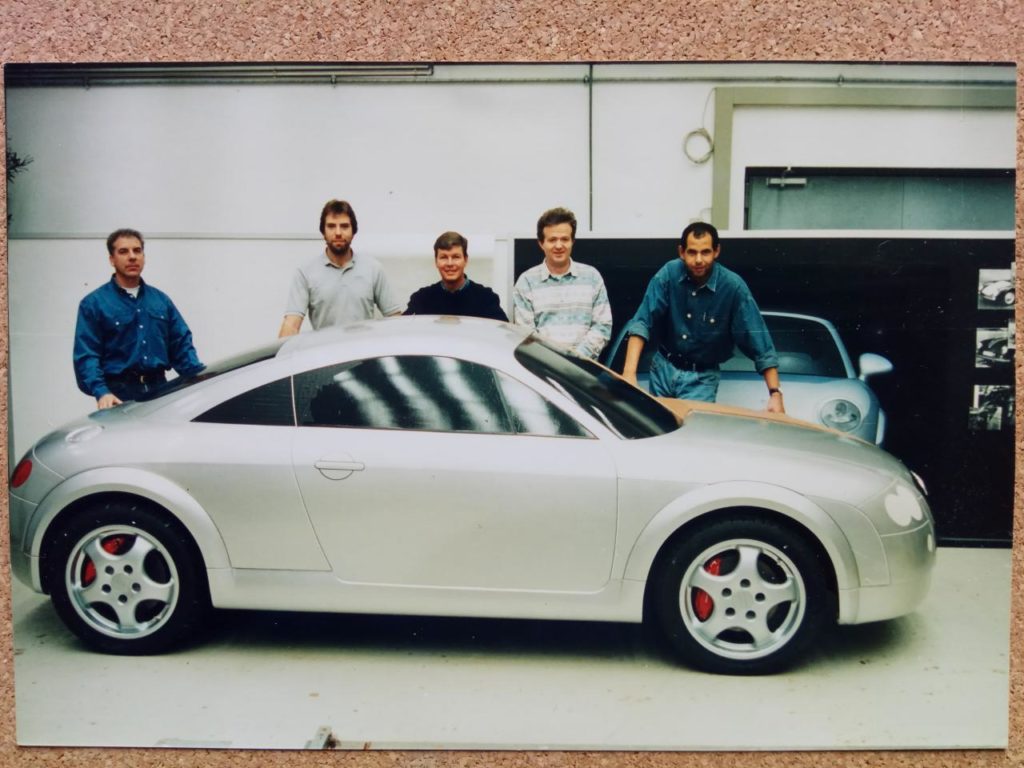
Another design element contributes to the unmistakable silhouette of the Audi TT Coupé: the circle – “the perfect graphic shape,” as Wenzel describes it. Numerous circular elements inspired the sports car’s exterior and interior design. Inspired by Bauhaus, every line in the Audi TT has a purpose, every shape a function. “At Audi Design, we always follow the philosophy of ‘less is more’. Bringing out the Audi TT Coupé’s unique character by reducing it to the essentials was a challenging and special undertaking for us designers.”
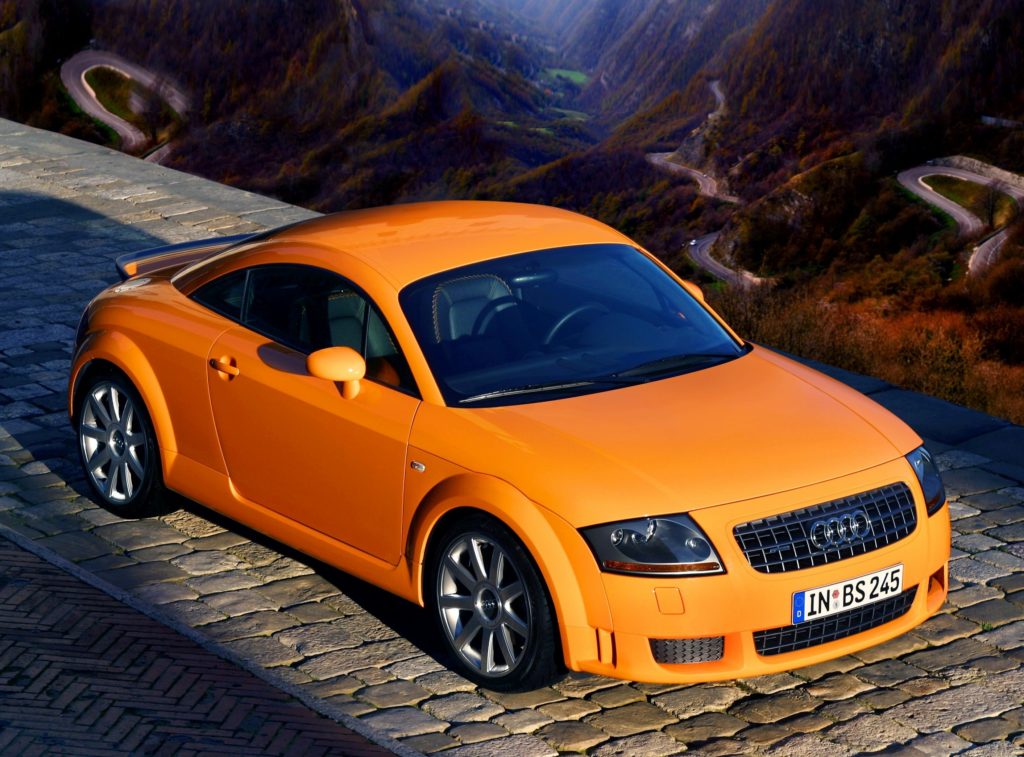
Two anniversaries in one year: Audi Hungaria celebrates alongside the Audi TT
In 1998, series production of the Audi TT Coupé began. One year later, Audi launched the TT Roadster. Like the show car and the Audi A3 launched in 1996, the sports car was based on the transverse engine platform of the VW Golf IV. From the outset, the TT was produced by Audi Hungaria Motor Kft. in Hungary. The painted TT bodies were transported overnight by rail from Ingolstadt to Győr, where the final assembly took place. This method of cross-site production between Ingolstadt and Győr was unique in the automotive industry at the time. Audi Hungaria, a wholly owned subsidiary of AUDI AG, is also celebrating its 30th anniversary in 2023. Founded in February 1993, originally as an engine manufacturing plant only, Audi Hungaria took over the assembly of the Audi TT in 1998 in cooperation with the Ingolstadt plant. In 2013, the company evolved into a full-fledged automotive plant. Since its foundation, Audi Hungaria has built more than 43 million engines and nearly two million vehicles.
The range of engines in the first-generation Audi TT was broad and naturally always sporty. The first-generation TT, for example, came with four-cylinder turbo engines with a power spectrum from 150 to 225 PS and a V6 unit with 250 PS. A highlight of the engine range was the four-cylinder in the Audi TT quattro Sport which was boosted to 240 PS, and 1,168 units were delivered. First-generation TT customers had plenty of choices when it came to selecting special equipment. In addition to exclusive colors such as Papaya Orange or Nogaro Blue, customers could equip the TT with factory-fitted special accessories. For example, the “baseball glove” design for the leather seats in the Audi TT Roadster, originally an eye-catcher in the show car, transitioned to series production. Over eight production years, 178,765 first-generation Audi TT Coupés (Type 8N) rolled off the production line by mid-2006. Exactly 90,733 Audi TT Roadsters were built between 1999 and 2006.

TT portfolio expands to include RS versions in the second generation
In the following two generations, the designers held to “reduction to the essentials” as the dominant design principle, which is made evident, for example, in the minimalist design of the exterior and the sleek, driver-oriented interior. The round shape, and the circular motif, remained typical of the TT portfolio and were unifying elements in the exterior and interior design. For example, in the aluminum fuel tank cap, the round air vents, the gearshift edging, and the distinctive gear knob.
The second-generation TT was launched in 2006 (Coupé) and 2007 (Roadster) and was based on the platform of the second-generation Audi A3. Adaptive dampers with Audi magnetic ride were used for the first time. Available as an option, this technology continuously adapts the shock absorbers to the profile of the road and the driver’s individual style. In 2008, the TTS sports model was launched with a 2-liter turbo engine and 272 PS, followed a year later by the TT RS with a 2.5-liter five-cylinder turbo engine with 340 PS and 360 PS in the Audi TT RS plus. In 2008, the brand with the four rings launched the TT 2.0 TDI quattro – the world’s first production sports car to run on a diesel engine.
The third generation of the Audi TT was launched in 2014 – and once again, Audi used the new generation to reduce its weight. The TT Coupé, with a 2.0 TFSI engine and manual transmission, weighed only 1,230 kilograms, up to 50 kilograms lighter than before. For the new TT and TT RS, the designers reinterpreted the unmistakable lines of the original TT from 1998 for the modern age. They enriched them with numerous dynamic facets, while the round fuel tank cap with typical TT lettering remained true across the generations. Many profile details also deliberately recalled the first-generation design classic. In technical terms, the third-generation TT offered several innovations. For example, this model marked the debut of the Audi virtual cockpit, a fully digital instrument panel with highly detailed, versatile displays that replaced analog instruments and the MMI monitor. In 2016, a new era for automotive lighting technology began in the Audi TT RS, when Audi used organic LEDs, known as OLED technology, for the first time. The sports car’s engine range is also impressive: The top model was initially the Audi TTS with a 2-liter turbo engine and 310 PS, followed in 2016 by the TT RS with the 2.5-liter five-cylinder turbo engine, one of the most emotional units the brand with the four rings has to offer. With its 400 PS, this engine boasted a sporty sound and, on top of that, was named “International Engine of the Year” nine times in a row. With the special Audi TT RS Coupé iconic edition model, which comes in Nardo Gray and is limited to 100 units, Audi is bringing together the design and technology highlights from a quarter of a century of the Audi TT to celebrate this anniversary year of 2023.
From Martin Longmore:
In November 1994 strictly those Audi Design designated personnel had access to ‘Project 197’ at Udelhofen studio. If your name is not on this list then you had nothing to do with either creation nor design of original Audi TT concept cars Coupe & Roadster….now think about that….
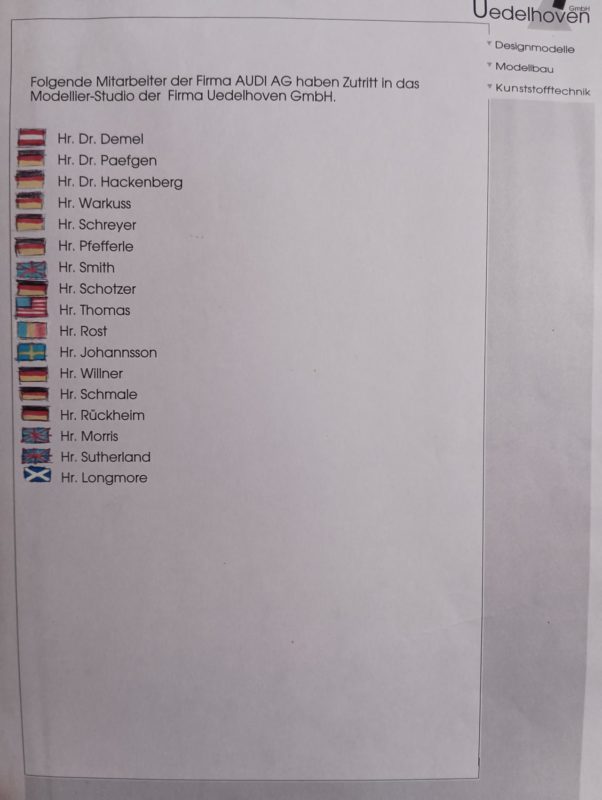

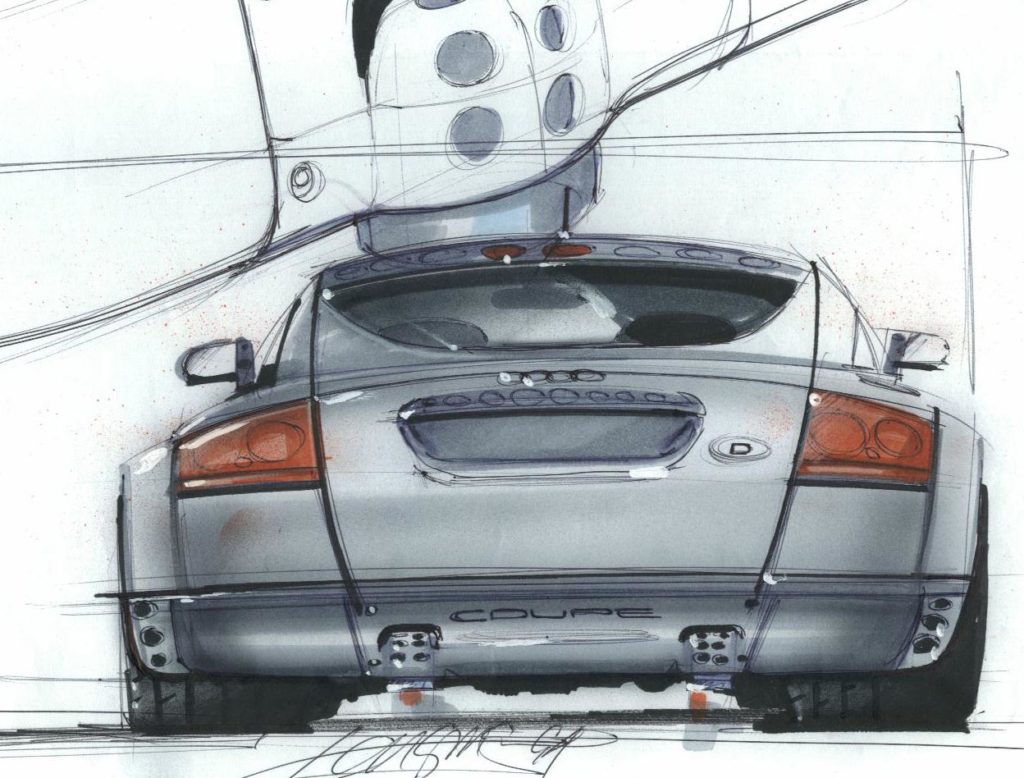
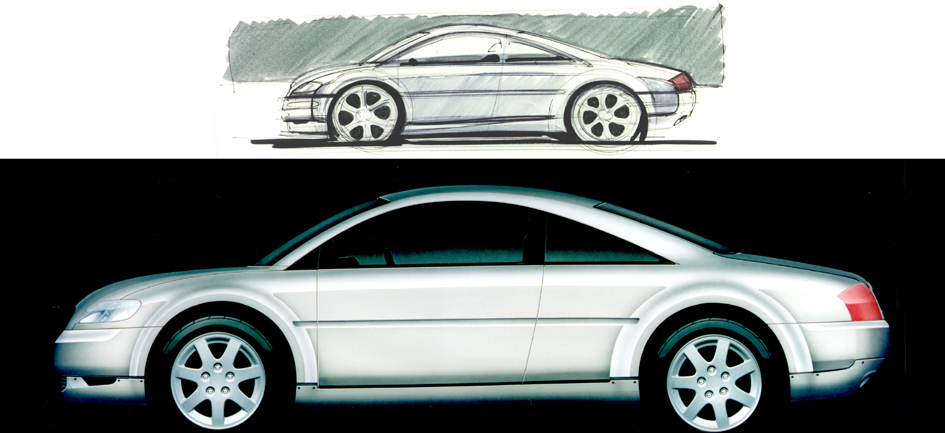
From Olivier Boulay:
The first Audi TT is the creation of Thomas Freeman.
I was working with him at Porsche (1984 / 1987) and Thomas had the dream to revive the Porsche 356. He was sketching and sketching again until he made the decision to make a model of it in his home kitchen on the weekends with the help of 2 modelers, Bengt Björkbom and Anders Johansson who were contracting modelers at Porsche at the time, and thus because he was not allowed to do it in the company. He nevertheless presented his model to Anatole Lapine , the Porsche design boss, but nothing happened. This model had already all the DNA of the Audi TT.
When Thomas Freeman was hired by VW in the US studio, he took his chance again with the help of Jay Mays and turned his 356 into the Audi TT presented at the Geneva Motor Show in 1995 if I remember well ( coupe and roadster). Very rare case, the production TT was 100% identical to the prototypes presented at Geneva. Then Freeman Thomas initiated the new beetle, another car he was sketching non stop at Porsche, and the new VW combo as well. Everybody who knows Thomas Freeman know that he his a VW and Porsche encyclopedia on 2 legs !




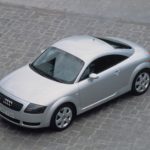






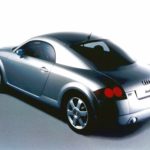










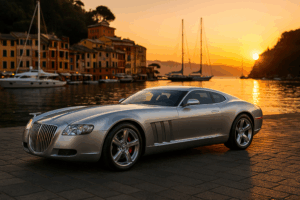
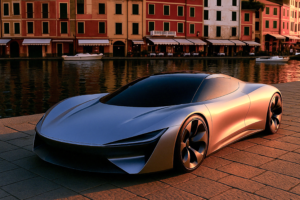




Boulay, LOL, it’s Freeman Thomas, and J Mays.
Wife worked for him, got along great, he wouldn’t give me the time of day.
To this day, the true story of the origin of the TT at Art Center is mocked at.
So be it, There are believers and disbelievers.
Freeman, a friend, a classmate, gives me some credit.
That I give to other upper classmates circa ’81.
Believe the disbelief.
We have discussed this, Cor.